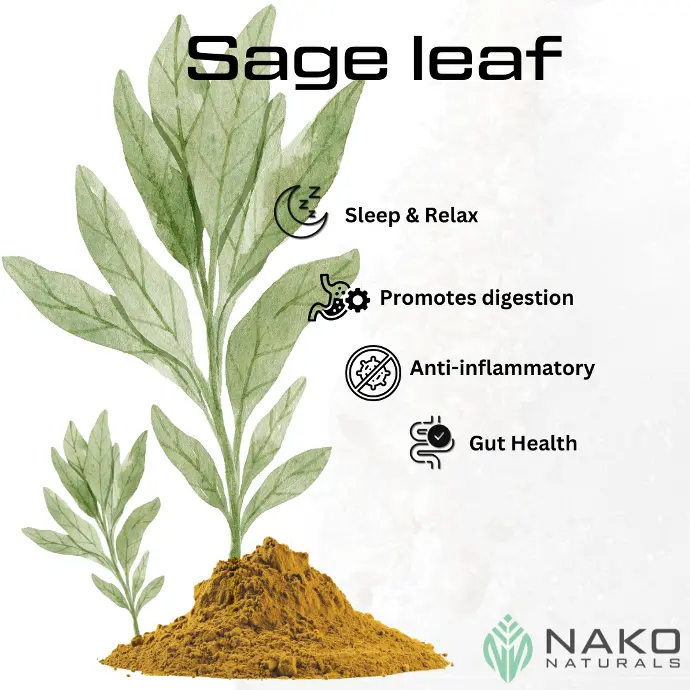Product catalogue
Did you know?
NAKO NATURALS collaborates directly with farmers to implement advanced practices that enhance sustainability and cleanliness in cultivation, production, and distribution processes.
Sage extract 2.5% Rosmarinic acid
| Botanical Name: | Salvia officinalis L. |
|---|---|
| CAS No.: | 3650-09-7 |
| Appearance: | fine powder |
| Plant Part Used: | leaves |
| Raw Material Used: | cultivated |
| Extraction Solvent: | Ethanol/Water |
| Extract Ratio: | 4:1 |
| Active Ingredient | Assay in % |
|---|---|
| Rosmarinic acid | 2.5 |
| If the specification does not meet your requirement, please contact us for a tailor made one. |
Historical Background & Origin
Sage, scientifically known as Salvia officinalis, is a highly esteemed medicinal herb with a rich history dating back centuries due to its myriad health-enhancing properties. Revered in ancient Rome and Greece, sage was utilized for its therapeutic benefits, with Hippocrates, the renowned physician, advocating its use for a range of conditions, from gastrointestinal issues to wound care. During the Middle Ages, sage was hailed as a universal remedy and featured prominently in various medicinal concoctions.
Bioactive Components
The efficacy of sage stems from its diverse array of bioactive compounds.
Key constituents like thujone, camphor, rosmarinic acid, and flavonoids play a pivotal role in delivering the impressive medicinal effects. Thujone, for instance, exhibits antimicrobial properties, aiding in combating infections, while rosmarinic acid boasts anti-inflammatory attributes that can alleviate pain and inflammation.
SAGE LEAF
Sage is distinguished by its potent fragrance and subtly bitter flavor. The silvery-green leaves possess a velvety texture and harbor essential oils responsible for its distinctive aroma. Additionally, sage showcases antiseptic and anti-inflammatory properties.
Health Benefits
- Anti-inflammatory
- Supports digestive health


